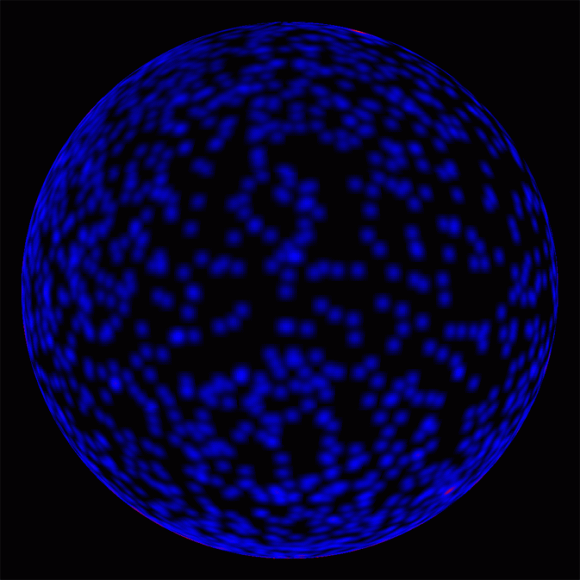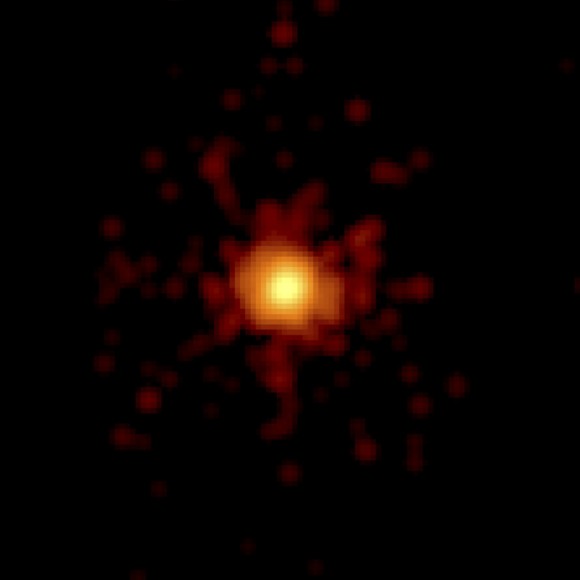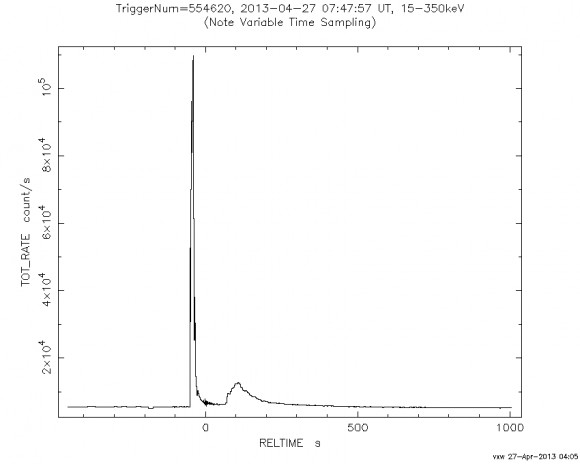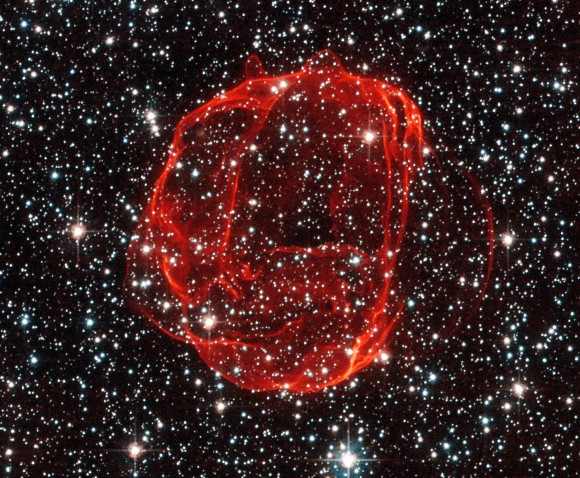_________________
The Herschel Mission Closes Its Eye | Phil Plait
Bad Astronomy | Monday, April 29, 2013, at 1:39 PM
- On May 14, 2009, the European Space Agency launched the infrared astronomical observatory Herschel into space. For very nearly four years, this fantastic telescope observed the Universe and returned high-resolution far-infrared data to scientists on Earth.
Sadly, the mission is now over. Yesterday, engineers reported a temperature spike in all the instruments on board, indicating the supply of liquid helium had finally run out. This ultra-frigid fluid was needed to cool the cameras so they could get clear views of some of the coldest objects in space. Without the helium, the detectors can no longer function optimally.
It’s bittersweet news; liquid helium evaporates, and even though Herschel started with 2300 liters, it had to run out eventually. The lifetime was estimated at just over three years, so we actually got some extra mileage out of it.
And the legacy of Herschel is secure. It took tens of thousands of observations, including some of the most exotic and beautiful images of the sky I’ve seen. Let me show you just a few of my favorites.
Note: These images are all false-colored, since Herschel sees light well beyond what our eyes can see. In general, in the pictures bluer material is warmer, and redder colder. But it’s all cold. Click the pictures to embiggen them. Trust me; you want to.
The Closest Spiral

^ The Andromeda Galaxy, its dusty arms easily seen by Herschel. Photo by ESA/Herschel/PACS & SPIRE Consortium, O. Krause, HSC, H. Linz
This image of the Andromeda Galaxy, our nearest big galactic neighbor, defies adjectives. Stunning. Jaw-dropping. Magnificent. Herschel’s infrared eye sees very cold material; the warmest stuff you see here is at -232°C (-385°F). Frigid dust clouds trace the majestic spiral arms of Andromeda, all the way down into the center of the galaxy. Things get difficult there; a couple of hundred million years ago there was a burst of star formation that mixed things up, and together with the densely-packed stars in the galaxy’s core, the dust itself gets disturbed. This picture is an incredible beauty, but get a good look: In a few billion years, our own galaxy will collide with Andromeda, forming one, much larger, galaxy.
Herschel’s Horsehead

^ The Orion B molecular cloud, including the famous Horsehead Nebula, seen as a small blue spur to the upper right. Photo by ESA/Herschel/PACS, SPIRE/N. Schneider, Ph. André, V. Könyves (CEA Saclay, France) for the "Gould Belt survey" Key Programme
I recently wrote about the famous Horsehead Nebula, a gigantic dark cloud that resembles a brooding cosmic chess piece. That picture was taken by Hubble in infrared light not too far removed from what our eyes can see. Herschel sees much farther into that part of the electromagnetic spectrum, revealing this magnificent vista of gas and dust. The yellow, pink, and white areas are the densest, where stars are actively being born. This complex is only about 1300 light years away, making it the closest large example of a stellar nursery in the sky.
Betelgeuse Hits a Wall

^ The far infrared eye of Betelgeuse, surrounded by thin shells of dust. Photo by ESA/Herschel/PACS/L. Decin et al.
The red supergiant star Betelgeuse—one of the brightest stars in the sky—is dying. In a million years or less it will explode, but in the meantime it episodically blows off thin shells of dust that expand around the star. But Betelgeuse is moving, so the shells become distorted as it rams through the thin material in space. This eerie Herschel image shows those shells, as well as a long, straight “wall” of material on the left toward which Betelgeuse appears to be heading. It may collide with this material in as little as 5000 years. This won’t affect the star at all, but it will interact with the shells, creating beautiful and intricate structures.
The Cold Tendrils of Star Birth

^ IC5146, a long tendril with a star-forming cocoon. Photo by ESA/Herschel/SPIRE/PACS/D. Arzoumanian (CEA Saclay) for the “Gould Belt survey” Key Programme Consortium
Stars sometimes form in dense, thick clots of gas and dust, impenetrable with visible light. But infrared light leaks out, which can be seen by Herschel. This is IC5146, just such a stellar nursery. The part colored blue is where the stars are forming, and the long orange filaments are probably formed by turbulence inside the dust. That material is cold, only a few degrees above absolute zero.
Star Birth in Orion

^ Star formation in the Orion Nebula, seen in a combined image from Herschel and Spitzer. Photo by ESA/NASA/JPL-Caltech/N. Billot (IRAM)
Similar to IC5146, stars are forming in the Orion Nebula, too. This image shows one small part of the nebula, a combination of infrared observations by Herschel and its cousin, Spitzer Space Telescope. The colorful gas and dust is seen by Spitzer, and the knots of intense orange are the locations of stars being born seen by Herschel. Combining data from different telescopes is a powerful way of peering into the Universe, sometimes revealing more science—and more beauty—than a single telescope can do on its on.
A Hole in Space

^ NGC 1999, an apparent hole in space. Photo by ESA/HOPS Consortium
NGC 1999 is a crowded region of gas and dust in Orion. Hubble observations of one section show bright gas with what looks like dark dust seemingly silhouetted in front of it, like a hole in space. That was assumed to be an illusion, just the dust blocking the gas, but when astronomers got this image from Herschel of the region, it came with a surprise: Instead of seeing dust glowing in the infrared, there really was a hole there! You can see it at the top of the picture; the green cloud shows dust, and just to the right of the star is the hole. This is probably a hollow region, carved out by stars that formed inside it.
The Cold Southern Cross

^ The Southern Cross in the far infrared. Photo by ESA/SPIRE/PACS
The iconic constellation of Crux, known as the Southern Cross, lies right in the middle of the disk of our galaxy, and so is strewn with turbulent gas and dust. This Herschel image reveals just how complex and chaotic this region is. Material swirls between the stars, and long thin filaments are dotted with bright knots where individual stars are being born. Some of this chaos is stirred up by the winds of infant stars, some by vast magnetic fields interacting, and some by the heat and fury of powerful exploding stars, dying after their short, fierce lives. And while the Southern Cross is easily seen by even a casual observer—I’ve spotted it myself in my travels south—all this material is invisible to the naked eye. It’s only with orbiting far-infrared observatories like Herschel that it can be seen at all.
Herschel brought us these images, and many more, increasing our knowledge and understanding of the Universe. So it’s sad to see it close its eye, but for the four years we had it, Herschel enriched our grasp of the cosmos immensely. And even better, all that data exists in archives, supplying scientists with data that will be used for decades to come, perhaps even by future generations not even yet born.
My congratulations to the Herschel team for this wonderfully successful mission, and to their contributions to science.

















